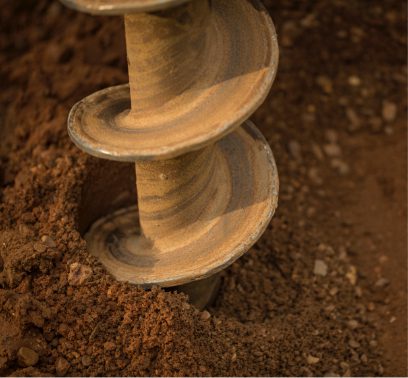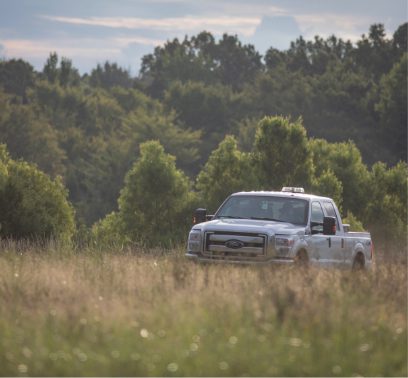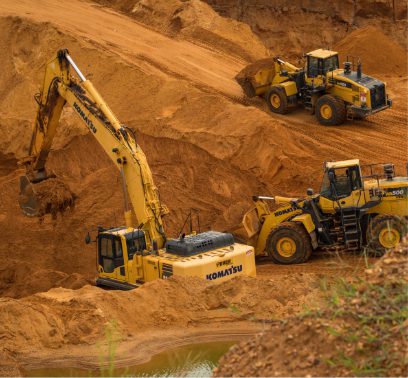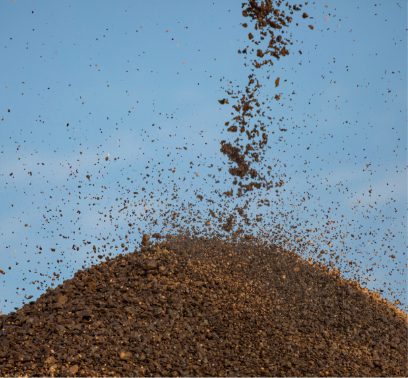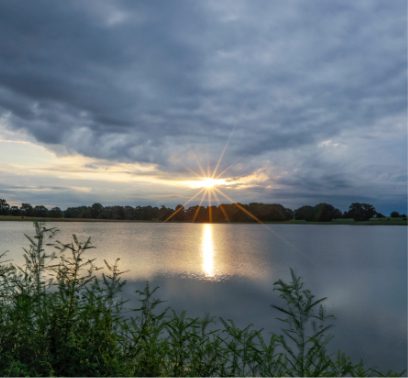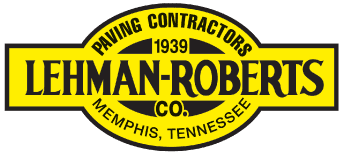Home » Our Process
OUR PROCESS
Do you know or suspect that your land possesses aggregate deposits?
Our mining process
1. EXPLORATION
You can’t provide quality aggregate if you can’t find it. That’s why we constantly search for construction aggregate, primarily found in sand and gravel deposits in the greater Memphis areas. Our aggregate is held to high standards, so we only look for the best possible sources.
Once we find an ideal area, we use a low impact all terrain vehicle to explore for deposits. This equipment, along with our careful technique, ensure minimal impact to the property where we’re drilling. We then inspect the material to ensure it meets our standards and evaluate how much material we can mine from the site.
Property owners do not pay Memphis Stone & Gravel Co. for the exploration process and are not obligated to allow us to mine. When we find quality material, we work to ensure a mutually beneficial agreement with property owners before moving to the next phase of our process.
2. PLANNING
Once a property owner agrees to let us mine their property, we immediately seek the proper permits from the local, state, and federal government. We then meticulously plan each part of the process, accounting for safety, efficiency, and environmental management.
Memphis Stone & Gravel Co. ensures that each project meets the regulations of several agencies:
- Tennessee Department of Environment and Conservation
- Mississippi Department of Environmental Quality
- U.S. Environmental Protection Agency
- Mine Safety and Health Administration
- U.S. Army Corps of Engineers
- Local Municipalities
3. MINING
The first step in our mining process is to strip overburden (which is the rock and soil overlying a resource) away from the resource. We use multiple types of equipment to do this, such as scrapers, excavators, and haul trucks, depending on the digging conditions.
Next, we mine the resource with hydraulic excavators. During this part of the process, we lay off small pits, approximately 3-5 acres, and move in a checkerboard pattern. This allows us to move overburden directly into a previously mined pit. We remove fertile topsoil from this overburden during stripping and store it for reclamation.
Then, we feed raw material on conveyor systems using wheel loaders. The materials we mine are unconsolidated, meaning we don’t use explosives to break it up. Because the materials we choose are naturally moist, we do not generate excessive dust when mining and transporting materials. Our conveyor system allows us to reduce truck traffic, easily moving resources back to our plant.
4. PROCESSING
Some mined material, such as clay gravel, can be sent directly from the mine to the job. Most of our materials, such as washed sand and gravel, must be processed before use.
We use water to separate sand from rock and wash out fine particles such as clay. The sand and rocks are then placed in piles to drain the water, which is saved to re-use later. The washed material is then used to make products such as ready-mix concrete, asphalt concrete, landscape materials, and drainage rock.
5. RECLAMATION
Our final step is also one of the most important. State law requires us to replace all soil removed to get the resource — but we find that it’s a good practice regardless. Reclaimed land often improves in value, creating beautiful lakes and maintaining fertile topsoil.
We backfill excavated areas with overburden and tailings from mined material. Our immediate goal is site stabilization through revegetation using a variety of grasses. Our goal is that property owners can still enjoy their land when we’re finished with the mining process.
A look at our
reclaimed sites
While we see ourselves as stewards to provide for our communities – the roads, homes, schools, shops, businesses and more that all need aggregates to stand – we also hold the unwavering belief that we are stewards of the resources and land bestowed to us. This means responsible and sustainable practices from the very beginning of our process.
Below you’ll see some of our reclaimed sites. In some cases, these properties were made more beautiful. In others, they were used for beneficial commercial development.
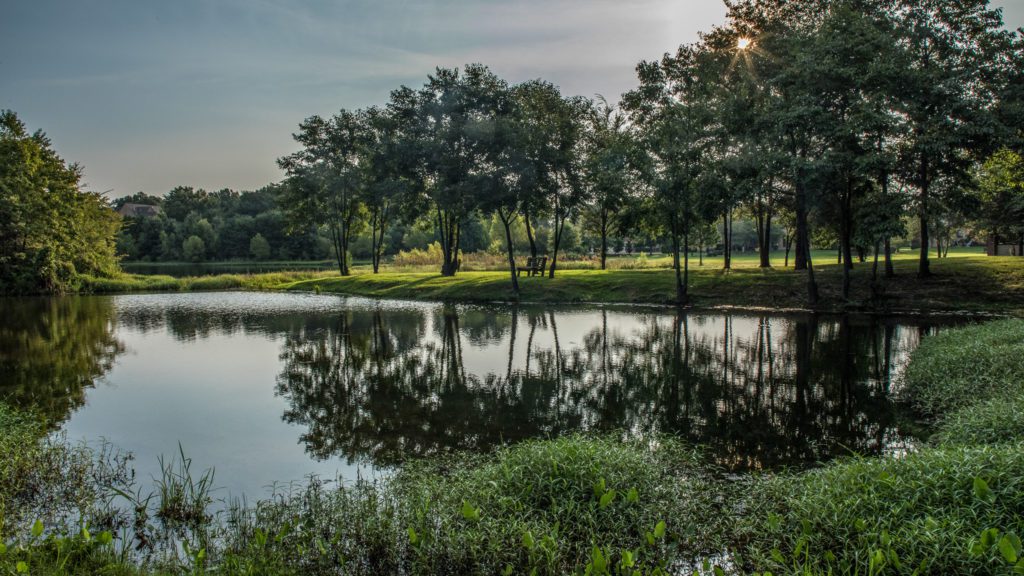
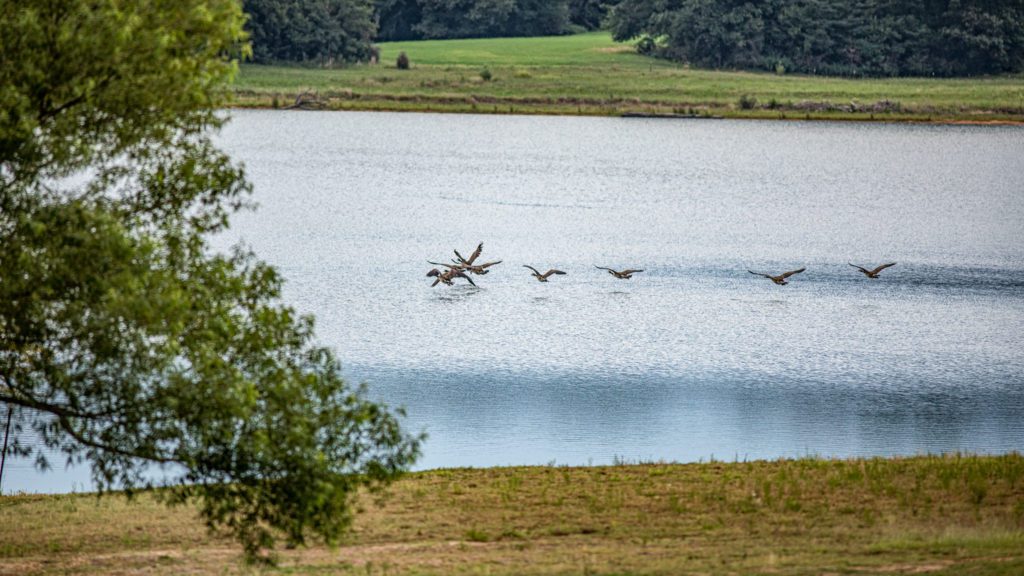
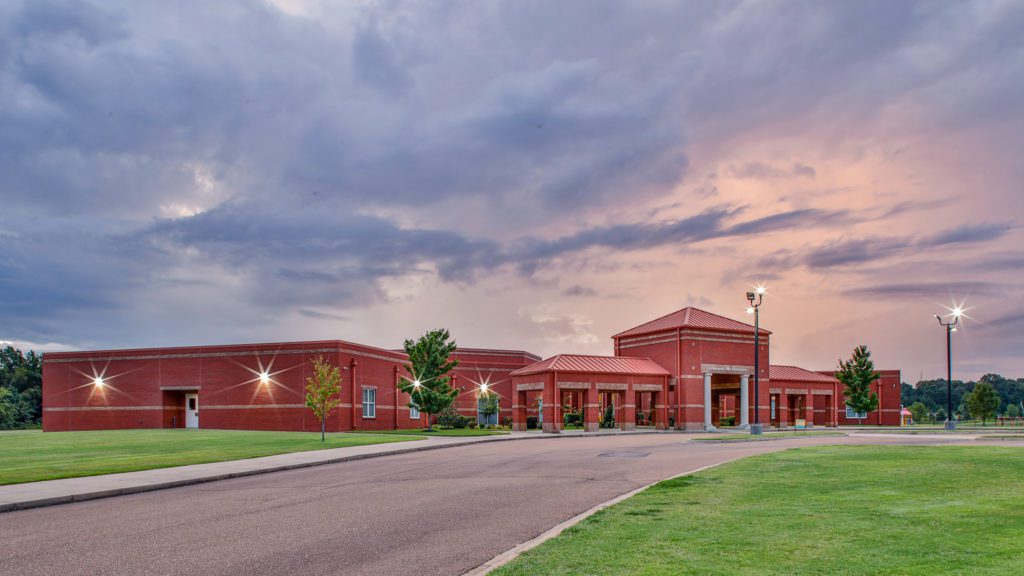
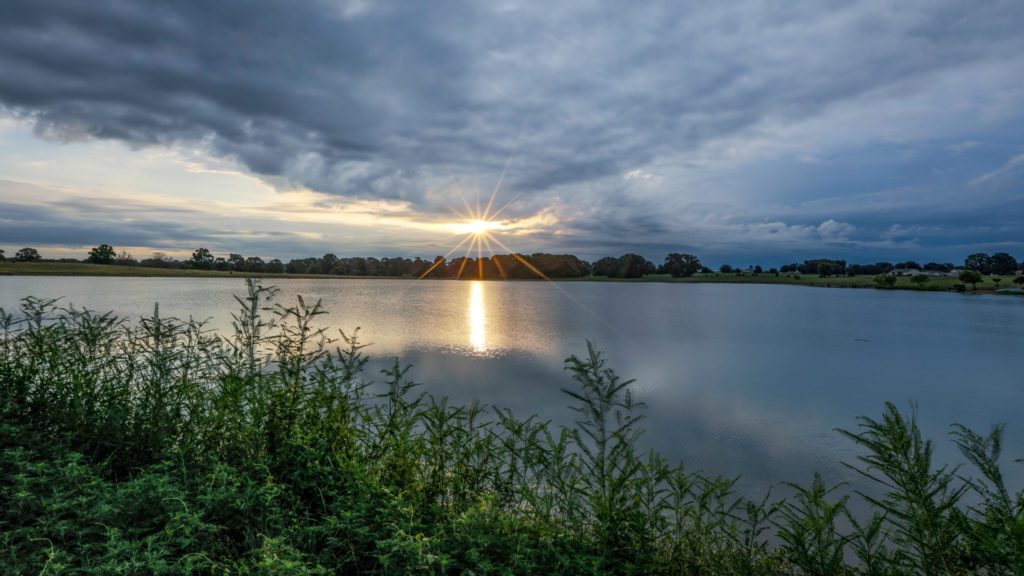
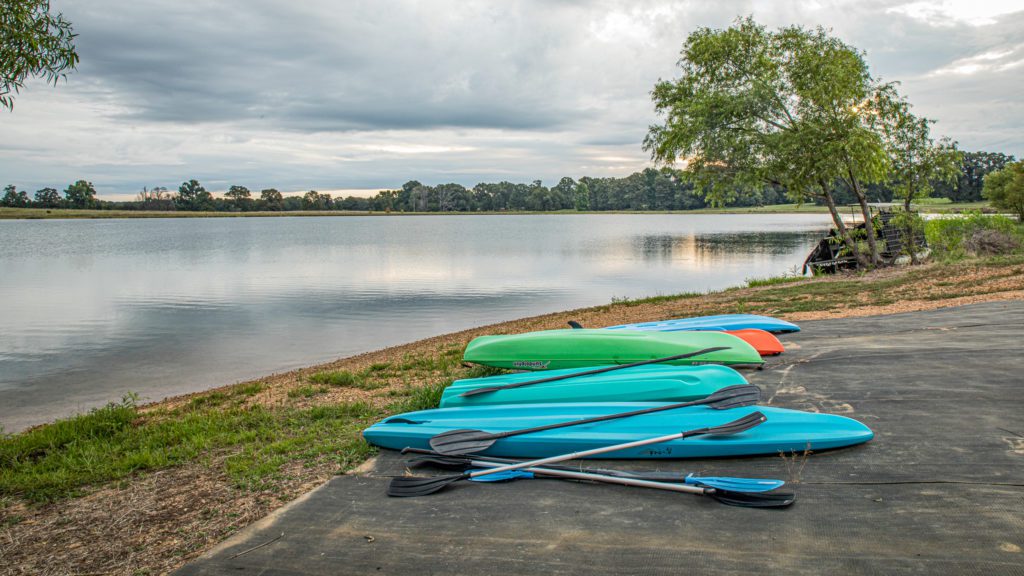
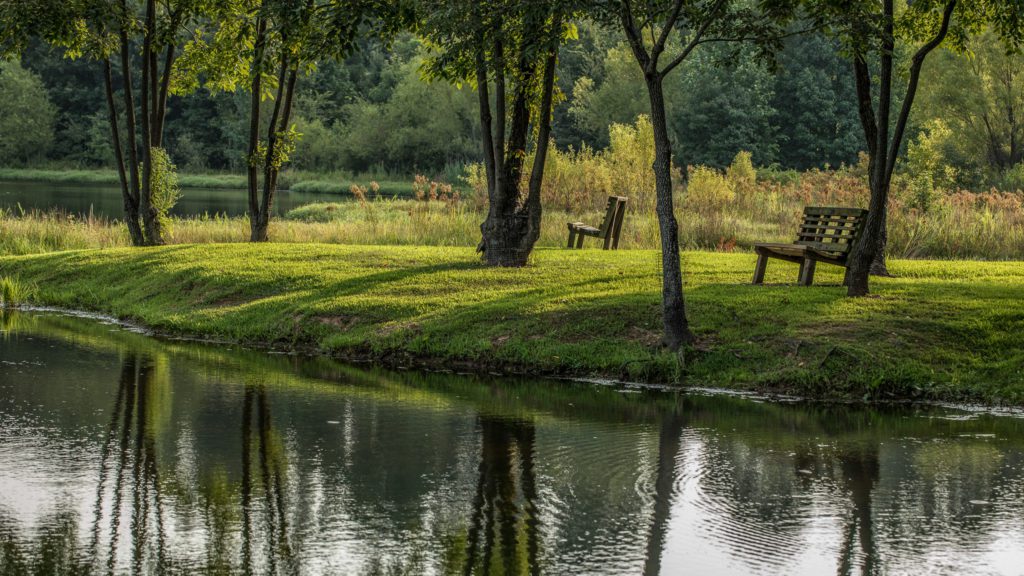
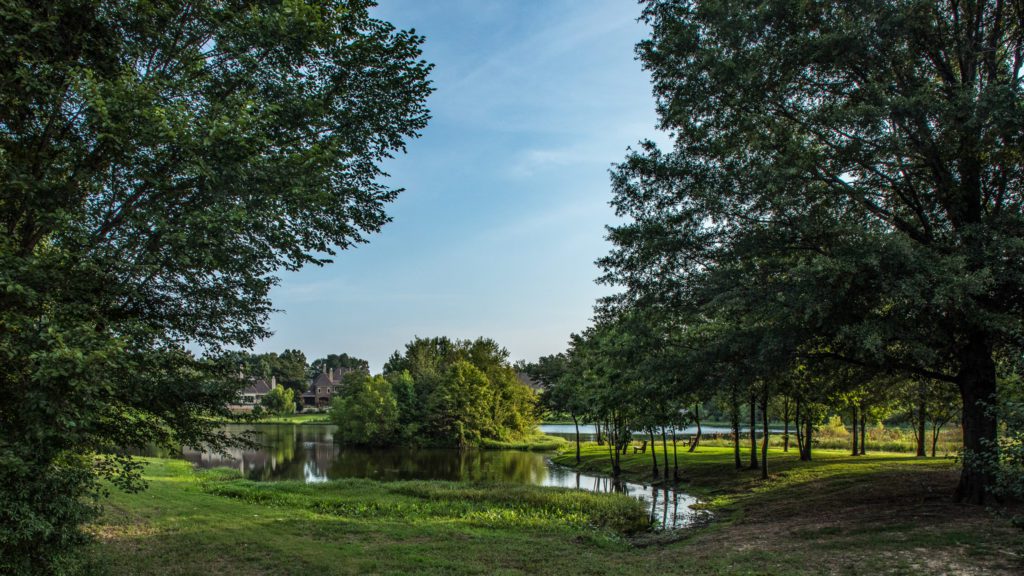
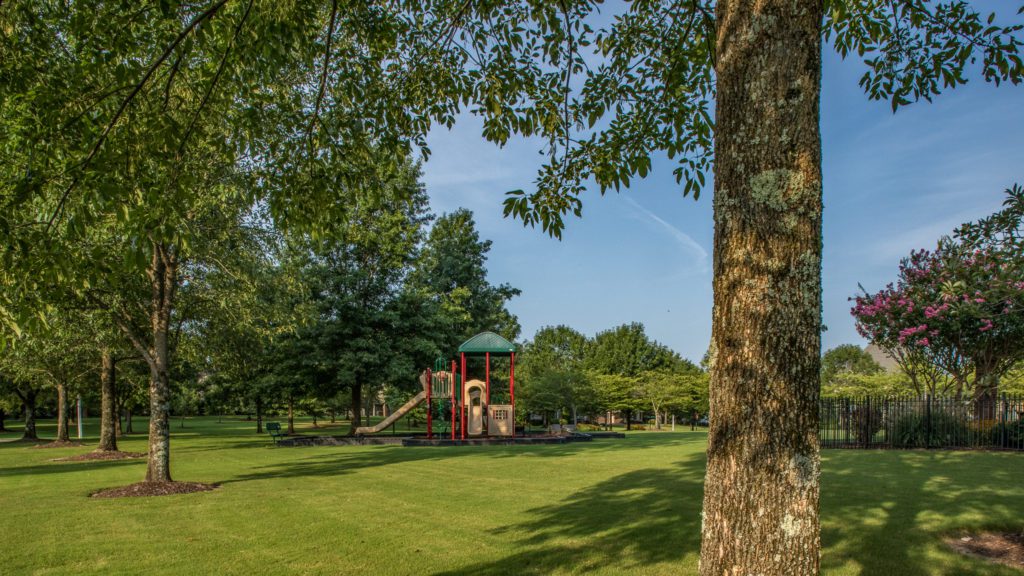
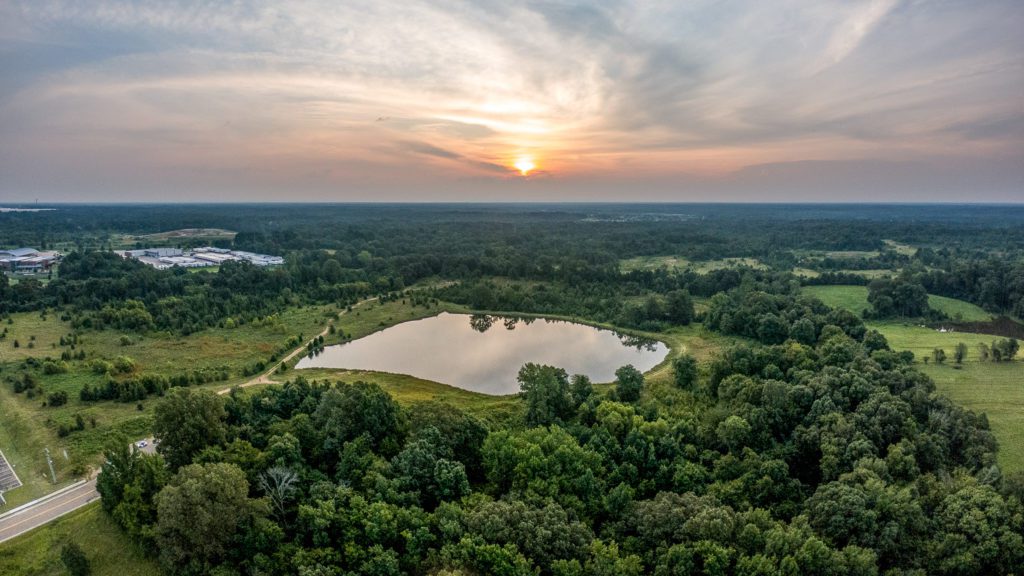
surface mining:
myth or fact?
MYTH: Aggregate plants waste and harm local water supplies.
FACT: Rather than calling ourselves “one-time users” of water, we like to think of ourselves as “handlers” of water supplies we use to wash the aggregates we mine. Every mining site Memphis Stone & Gravel operates utilizes a closed-loop system, with no chemical additives. This means the water system is continually recirculated, offering an effective solution to eliminate water waste and contamination.
MYTH: To find high quality sand and gravel, you can just dig a hole anywhere.
FACT: False. Our prospecting process locates deposits of aggregates, where they were left by nature. This means that aggregates are not always found where they may be expected. In some cases, landowners are surprised to learn of deposits beneath the surface of their acreage.
MYTH: There is no added sustainability benefit to having mining sites closer to the communities they supply.
FACT: Quite the opposite is true. The closer a mining site sits to the community it serves, the less fuel that is burned to truck these materials back and forth to job sites.
MYTH: Local and federal government agencies work to stop the creation of mining pits.
FACT: Before we take the first shovel of dirt from the mining site, we seek the proper permits from the local, state and federal government. We see this necessary step as added assurance that our team will safely and efficiently take care of the land, even long after we’ve finished mining.
MYTH: The local economies and infrastructure of our communities would be able to continue thriving without contributions from aggregate plants.
FACT: Without the contributions of aggregates to the infrastructure of our communities, the local economy and the development of the region would halt entirely. Here’s how:
- Our industry provides and supports jobs, whether it be groundmen directly working the mining site or haulers who are taking the materials where they’re needed most.
- Without the resources our industry mines, the makeup of many materials used in construction (i.e., concrete and asphalt) would look drastically different or even cease to exist. These materials are crucial to building roadways, homes, and businesses.
FREQUENTLY ASKED QUESTIONS
Aggregates are mined materials, such as sand and gravel, that are utilized in an array of construction projects. Whether we realize it or not, we rely heavily on these resources to sustain our everyday way of life. Without them, it would be impossible to build a community – including the roads, homes, and businesses within it.
The process starts with a phone call to our geologist. He will interview you to determine if your property has potential for sand and gravel based on the company’s previous investigations near your property. If potential exists, the next step would be drilling the property with a rig (pictured). We are accustomed to drilling areas that have livestock and can accommodate row crop schedules.
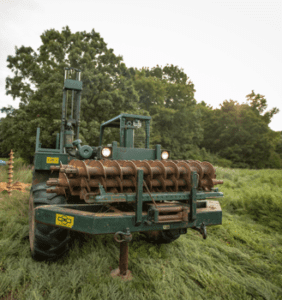 There’s a common misperception that the work we do causes an adverse impact on our environment. However, the drilling process is minimally invasive, with no chemicals or additives at all. We utilize a rig-mounted ATV pulled on tires similar to that of a tractor. This drills a continuous flight auger with an 8-inch diameter hole. Overall, the drilling process is similar to you digging a hole in the ground to put a fence or post up. On average, the holes we drill are about 65 feet deep. When we’re done, we backfill the hole. Most of the time, property owners can’t even tell we were there once we finish. All they’re left with is a 3-foot mound that typically flattens out after a good rain.
There’s a common misperception that the work we do causes an adverse impact on our environment. However, the drilling process is minimally invasive, with no chemicals or additives at all. We utilize a rig-mounted ATV pulled on tires similar to that of a tractor. This drills a continuous flight auger with an 8-inch diameter hole. Overall, the drilling process is similar to you digging a hole in the ground to put a fence or post up. On average, the holes we drill are about 65 feet deep. When we’re done, we backfill the hole. Most of the time, property owners can’t even tell we were there once we finish. All they’re left with is a 3-foot mound that typically flattens out after a good rain.We prospect for two basic types of materials:
1) A material suitable to make a “washed” sand and/or gravel for concrete and asphalt
2) A base sand and gravel used in road construction
- It depends on the location and type of deposit we may need in your area. As a general rule, if you have 50 acres or more, we would be interested in hearing from you. If you have land in Shelby County, Tipton County or DeSoto County, we will give you special consideration, as we consider these areas a high priority.
We will arrange a meeting to discuss our findings after we complete our analysis. If your land has material that meets our specifications, we may make you an offer to purchase your land or preferably lease your land, while paying you a royalty on the material that we mine. Of course, in a lease arrangement, the land would be reclaimed and returned to you in a condition that would be conducive to future development.
In short – None. Land with quality material at the right location can be worth several thousands of dollars per acre. Our exploration process requires no obligation on your part, has little impact on your land, and could reveal a financial asset you did not know about. We look forward to hearing from you.

